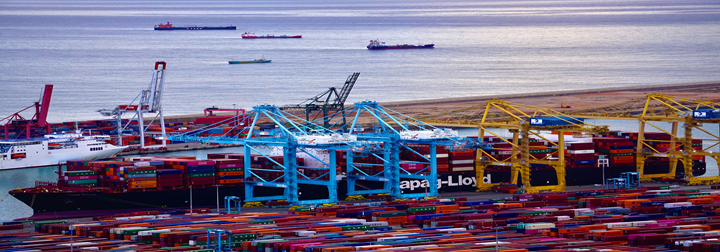The strictest COVID -19 lockdown in China since the pandemic began has resulted in container goods sitting at Shanghai’s port for nearly two weeks.
Over 470 ships are reportedly waiting to deliver resources into China. These ships carry materials from grains to metal ore. Ships started to line up outside Shanghai port after authorities initiated a city-wide lockdown last month to control the spread of COVID-19. Global supply chain has also been affected due to this marine congestion outside Shanghai as it is one of the world’s busiest ports.
In more than two weeks, the congestion has expanded to Ningbo-Zhoushan. It is because ship owners divert their ships to other ports of the country. Notably, the port is operating normally under a “closed loop“. However, trucks entering and leaving the city are facing difficulties. The city is cut off from the rest of the country due to an increase in COVID-19 cases.
Due to the increase in COVID-19 cases, there is a shortage of port workers at Shanghai port. This led to slowing the delivery of documentation due to which cargo ships are taking time. Only those export containers that were at the port of Shanghai could be loaded on the ships.
Meanwhile, goods booked on outbound vessels are stranded at warehouses as shuttle trucks can not operate due to lockdown.
According to a Bloomberg report, a total of 197 container ships are either loading or waiting to load in the combined anchorage of Shanghai with Ningbo. It is reportedly 17 percent higher than the last week.
People in the business sector have expressed concern over the impact of the COVID-19 lockdown on the economic growth of the country.
Wait times at Shanghai marine terminals has increased nearly 75% since the lockdowns began. Delays at the Shanghai terminal have sent ships to neighboring ports in Ningbo and Yangshan, but those ports are beginning to get congested as well.
The global impacts of this current bottleneck are still pending and depend greatly on the length of Shanghai’s lockdown. This could turn into the biggest supply chain issue since the start of the pandemic if China’s marine shipping congestion isn’t cleared up soon.
Reference:
https://www.visualcapitalist.com/satellite-maps-shanghais-supply-chain-standstill/
https://www.timesnownews.com/world/china-heavy-marine-congestion-reported-around-shanghai-due-to-covid-19-lockdown-supply-chain-to-be-affected-article-90944176
The U.S. Food and Drug Administration (FDA) today announced significant action to make it faster and less costly to develop biosimilar medicines, which are lower-cost “generic” alternatives to biologic drugs that treat serious and chronic diseases.
Products containing titanium dioxide in the EU are no longer required to carry warnings about cancer risk, after the European Chemicals Agency (Echa) revoked its classification as a suspected carcinogen. The move follows a June 2025 decision by the Court of Justice of the European Union and means that safety data sheets, labelling and packaging requirements for titanium dioxide have been relaxed across industries including paints, pharmaceuticals, cosmetics and food.
The economic impact of biosimilars on the Australian health care system is now clearer, with data revealing their role in reducing market expenditure and driving price competition.
The Chinese Golden Week impacts Ocean Freight Shippers for two main reasons:
Donald Trump’s tariffs of 50% have come into force on most US imports from India. India’s giant generic pharmaceuticals sector and its electronics and petroleum products are exempt from the tariffs. Aluminium, steel and copper remain at 25%, but job-heavy sectors such as textiles, jewellery, seafood and leather are squarely in the line of fire.
The European Chemicals Agency (ECHA) has published the updated proposal to restrict per- and polyfluoroalkyl substances (PFAS) under the EU’s chemicals regulation, REACH. The update has been prepared by the authorities from Denmark, Germany, the Netherlands, Norway and Sweden, who submitted the initial proposal in January 2023.
Most chemicals exported from the 27 member countries of the European Union into the US will be subject to a 15% tariff on top of their selling prices under an agreement signed on July 27 between the US and the European Commission.
We’re thrilled to announce a new strategic alliance between ExSyn, Exim-Indis and simABs, a leading EU-based biologics manufacturer known for its patented continuous flow technology in antibody production.
The global trade landscape is undergoing significant changes following the announcement of new reciprocal tariffs by the United States government. Recent developments indicate significant shifts in global trade dynamics, with key policy adjustments, ongoing negotiations, and evolving logistics patterns. Below is a summary of the latest developments.
